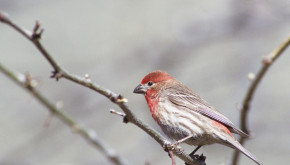
When should you start and stop feeding birds?
Seed-eating birds get their food from a variety of sources throughout a day, so what people provide is a convenient and easy source of food, but not necessary to help the species of birds that come to feeders. So, starting or stopping your feeding at any particular time of year won’t have much of an impact on those birds. The only exception is if there is a bad snow or ice storm and natural food is buried for a period of time. In that event, the seed you put out could be life-saving for some birds. Some people choose to only feed in winter, but others feed year-round to attract them closer to enjoy them up close.
Nectar-eating birds, such as hummingbirds and orioles, begin their migration north from the tropics in January. Hummingbirds may arrive in southern states as early as January, the middle states in March or April, and upper Great Lake states in May. As hummingbirds head south again, the birds farther north will stop at feeders along their way south; so some people leave their feeders out for a few weeks after they notice their summer birds have left, in the event passers-by stop to refuel.
For people who only feed during the summer, they can stop feeding in the fall whenever they want. Migratory birds leave on their own schedule, regardless of food availability, so continued feeding will not prevent birds from migrating as they should.
For more information, visit the National Audubon Society's Bird Feeding Basics page. Information for this article courtesy of the National Audubon Society website. Photo credit: Dave Menke, published by the US Fish & Wildlife Service.
